QZSS is Becoming a Seven-satellite Constellation
The Quasi-Zenith Satellite System (QZSS) has offered services as a four-satellite constellation since November 2018 in a range of different fields. It is now an important type of social infrastructure that is essential for our daily lives. Efforts to develop and outfit the system are underway to create a seven-satellite constellation with even better services and functionality. This page introduces the new services and features that will be offered with QZSS as a seven-satellite constellation.
Schedule
In the Implementation Plan of the Basic Plan on Space Policy revised in December 2023, it is stated that "In order to establish a seven-satellite constellation, QZSS satellites will be launched sequentially from FY2024 to FY2025 based on the development status of the H3 launch vehicle, and development and maintenance of the satellites will be steadily promoted."
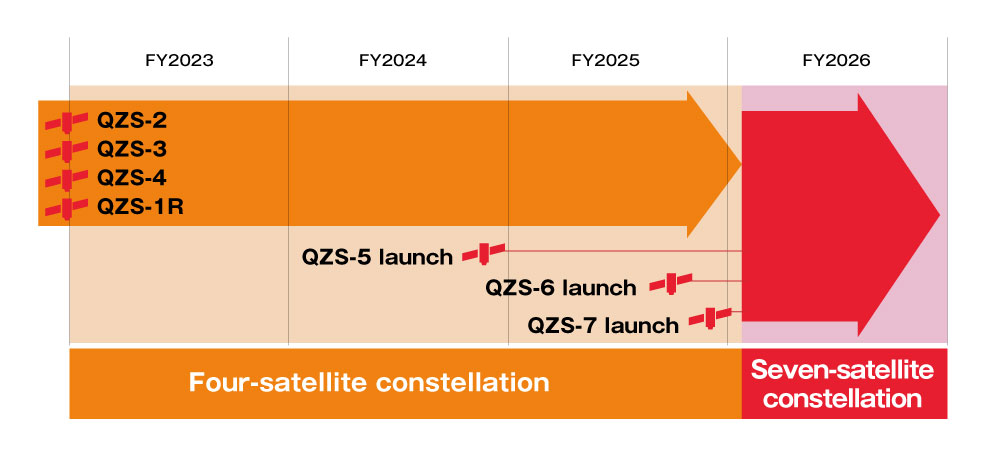
Features of the seven-satellite constellation
Sustained positioning
Satellite positioning requires four or more positioning satellites. When QZSS becomes a seven-satellite constellation, at least four QZSS satellites will always be in the sky above Japan, making sustained positioning possible with QZSS alone.
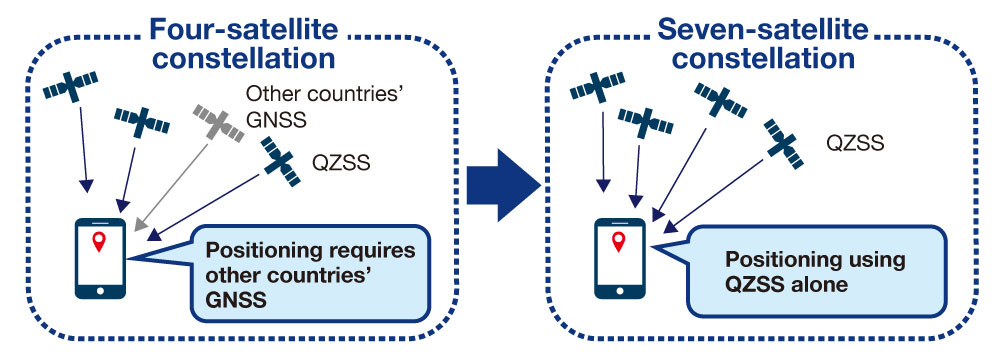
Expanded service range
One quasi-zenith satellite, one geostationary satellite, and one quasi-geostationary satellite will be added to create the seven-satellite constellation. This will result in a larger range where QZSS signals can be received.
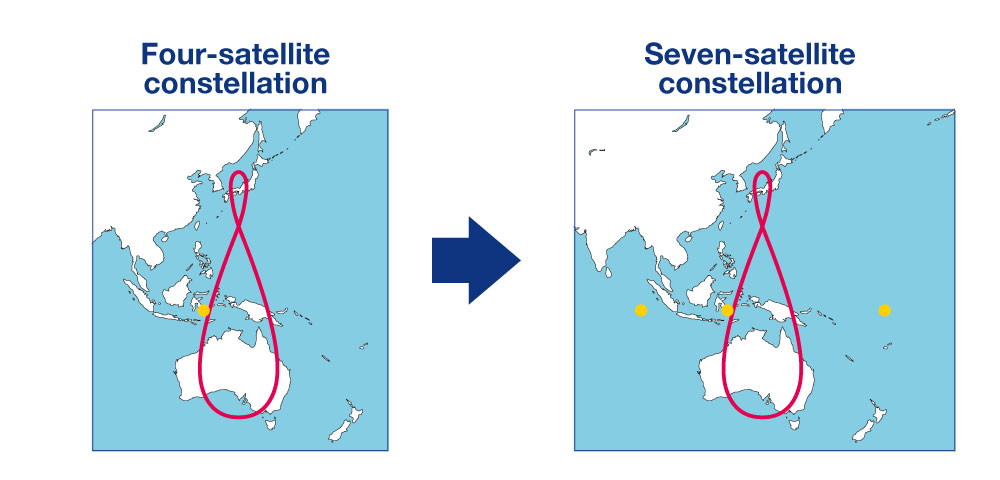
Transmission signal changes
Some transmission signal specifications will be changed as more QZSS satellites are operated and their functions are improved.
New services
MADOCA-PPP (Multi-GNSS ADvanced Orbit and Clock Augmentation - Precise Point Positioning)
This new augmentation service enables highly precise positioning in the Asia-Oceania region. It can be used with a receiver and antenna that support MADOCA-PPP positioning. This service widely covers the Asia-Oceania region, including the ocean, with expected applications outside of Japan and in the maritime field. Full-on operation started in April 2024.
Signal authentication service
To help prevent identify theft in satellite positioning services, this new signal authentication service adds authentication information (a digital signature) to navigation messages. The user who receives the message can confirm the digital signature to determine whether the received signal is safe. Full-on operation started in April 2024.
Expanding existing services
Expanding Satellite Report for Disaster and Crisis Management
In April 2024, Satellite Report for Disaster and Crisis Management started distributing J-Alert (missile launch information) and L-Alert (evacuation instructions). Disaster information for Australia and Southeast Asian countries will begin around FY2025.
Improved functions with the seven-satellite constellation
Better positioning accuracy for users
“Inter-satellite ranging capabilities” and “between satellite and ground ranging capabilities” will reduce satellite orbit position and clock errors, resulting in better positioning. Satellite positioning services will be more accurate when QZSS is a seven-satellite constellation.
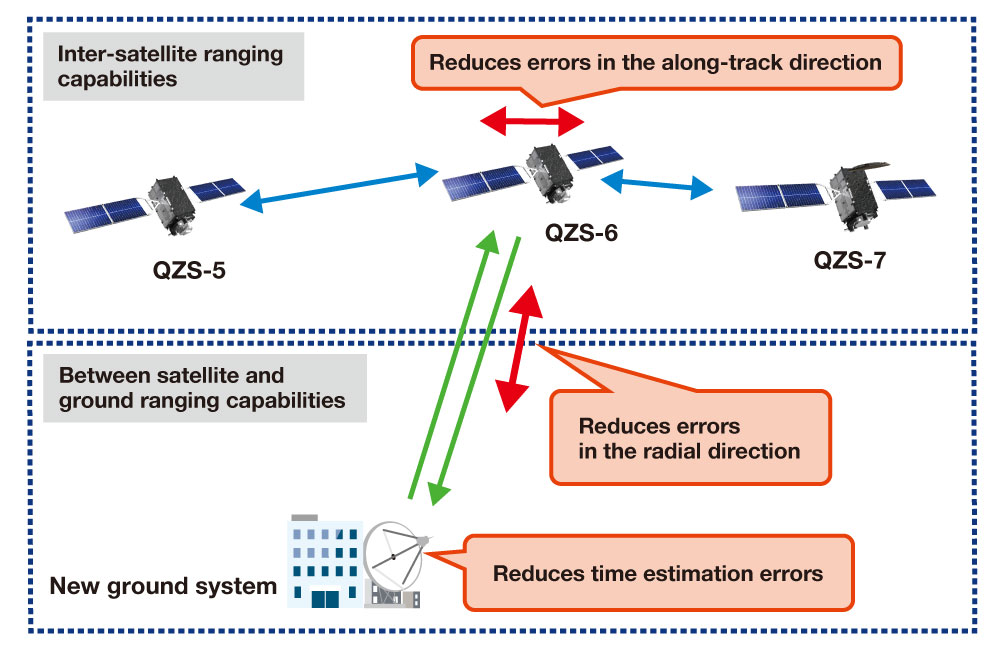
-

Overview of the Quasi-Zenith Satellite System (QZSS)
-

What is the Quasi-Zenith Satellite System (QZSS)?
-

Advantages of QZSS
-

Service Comparison
-

Transmission Signals
-

Satellite Positioning, Navigation and Timing Service (PNT)
-
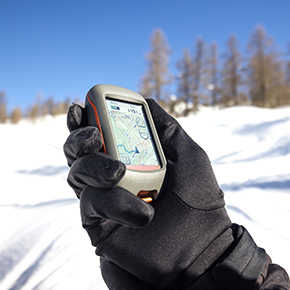
Sub-meter Level Augmentation Service (SLAS)
-
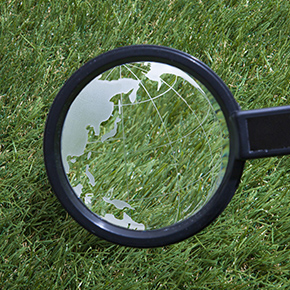
Centimeter Level Augmentation Service (CLAS)
-
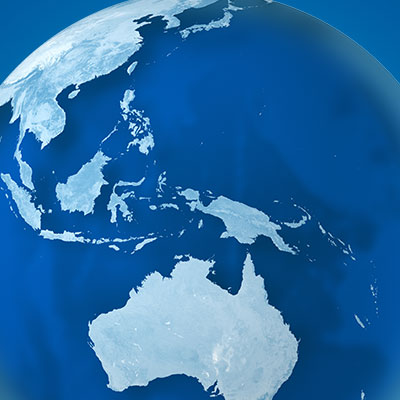
Multi-GNSS Advanced Orbit and Clock Augmentation - Precise Point Positioning (MADOCA-PPP)
-

Satellite Report for Disaster and Crisis Management (DC Report)
-

QZSS Safety Confirmation Service (Q-ANPI)
-

Positioning Technology Verification Service
-

Signal Authentication Service
-

Public Regulated Service
-
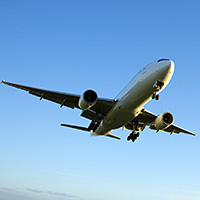
SBAS Transmission Service


